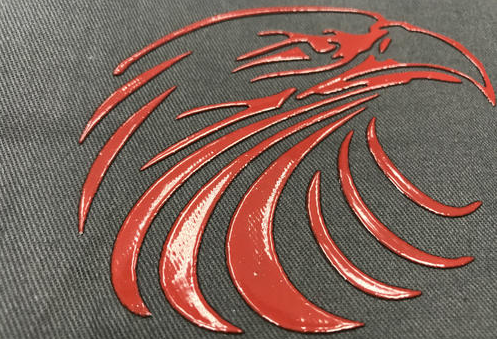As a qualified textile fabric practitioner, you must master various printing processes related to fabrics. Below, the editor will introduce to you the following most common printing methods~
Adhesive printing
Advantages: wide application, bright colors, high degree of reduction, affordable price, can print large areas of multiple colors, strong hiding power .
Disadvantages: It will stick to each other in hot weather and feels hard.
Material: Suitable for printing of various dark colors and materials.

Reflective printing
Advantages: Reflective printed textiles have a strong “eye-catching” effect under light conditions. Safety clothing (or signs) made of this kind of high-visibility reflective material can be easily spotted by night drivers no matter whether the wearer is in a distant place or under interference from light or scattered light, thereby smoothly Solved the problem of “seeing” and “being seen” while driving at night.
Disadvantages: easy to crack, not washable.
Material: used in highway signs, advertisements, posters, special uniforms, police uniforms, and sanitation clothing.

Light variable printing
Advantages: Adding several high-tech UV light-activated Mars microgels to the dye Granules, the color changes instantly when exposed to ultraviolet rays.
Disadvantages: easy to crack, not washable.
Material: used for cultural shirts, children’s clothing, advertising paintings, etc.

Thick plate printing
Advantages: A very neat three-dimensional effect can be achieved.
Disadvantages: The cost is relatively high.
Material: Suitable for various knitted fabrics.

Flocking printing
Advantages: soft feel and good warmth retention. Wool is woven onto cloth using a specific process.
Disadvantages: It is easy to fall off when the number of washing times increases, and there will be sticky hair.
Material: Suitable for all types of warm fabrics or trademarks.

Transfer printing
Advantages: fine patterns, rich and clear layers, high artistry, strong three-dimensional effect, which are beyond the reach of ordinary printing methods, and It can print photography and painting style patterns; the printing color is bright, and during the sublimation process, the tar in the dye is left on the transfer paper and will not contaminate the fabric.
Disadvantages: The disadvantage is that a large amount of transfer paper is consumed, and it is washed after printing, which consumes water and produces sewage at the same time.
Material: In addition to being suitable for synthetic fiber fabrics, transfer printing can also be used for printing pure natural fiber fabrics and their blended fabrics.

Digital printing
Advantages: fast response, good proofing effect, high customer recognition rate, and wide use.
Disadvantages: slow printing speed and high ink price.
Materials: various gift boxes, various decorative items printed with patterns, photos, etc.

Penetration printing
Advantages: soft feel, wide application, and patterns on the front and back.
Disadvantages: The color is not too bright.
Material: Generally used for blanket printing.

Ink printing
Advantages: clear patterns, bright colors, soft hand feel, and more beautiful patterns than glue printing.
Disadvantages: The price is more expensive than glue printing.
Material: The fabric must be loose and light.

Foam printing
Advantages: Strong three-dimensional effect, the printing surface is prominent and expanded.
Disadvantages: The color fastness of the printing part is difficult to control.
Material: widely used in cotton, nylon cloth and other materials.

Burnout
Advantages: translucent texture, concave and convex patterns, natural flower shape, unique style, Colorful.
Disadvantages: Cannot use cotton fabrics.
Material: In addition to rayon and silk, polyester-cotton core-spun yarn is currently used as raw material.

Silicone printing
Advantages: soft to the touch, sticky, non-stick, washable and durable, colorful Strong fastness.
Disadvantages: The price is not as expensive as glue printing.
Material: Suitable for various fiber fabrics.

Pigment printing
Advantages: bright and gorgeous color, good light stability. It can give the fabric a plump, dry and soft feel, and it can be washed quickly Excellent strength and good breathability of the fabric.
Disadvantages: The paint-printed area feels slightly harder and perhaps thicker than the unprinted area.
Material: Suitable for various fibers Fabric.

Discharge printing
Advantages: Soft feel.
Disadvantages: Yes Odor must be washed with water, and the color is difficult to grasp and easy to change color.
Material: suitable for various fiber fabrics.

Water slurry printing
Advantages: Wide application, good flower placement, soft feel, cheaper price.
Disadvantages: weak coverage, not too bright colors.
Material: Suitable for printing on light-colored fabrics.







